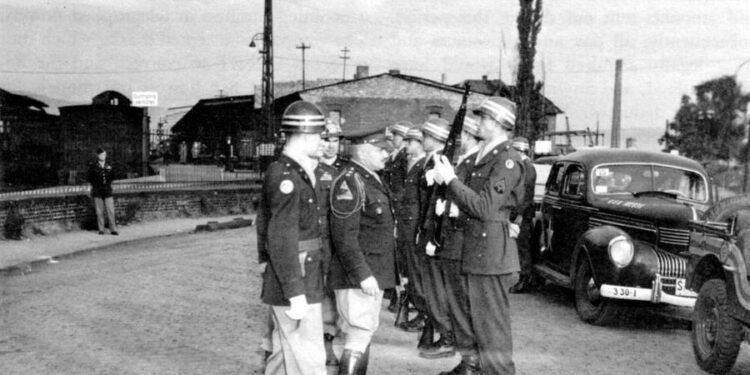The Isle of Man Constabulary has launched a new road safety initiative, Operation Uplift, aimed at reducing nighttime traffic accidents across the island. As part of the campaign, officers are urging drivers, cyclists, and pedestrians to ensure they are visible after dark by using appropriate lighting and reflective gear. The move comes in response to recent concerns over road safety during the darker months, with authorities emphasizing the importance of being “bright at night” to protect all road users.
Constabulary Launches Operation Uplift to Enhance Nighttime Road Safety
In a bid to reduce nighttime accidents and improve overall road safety, the constabulary has initiated Operation Uplift, a targeted campaign encouraging all road users to increase their visibility after dark. Officers will be conducting regular patrols and roadside checks focusing on proper use of lights, reflectors, and high-visibility clothing. The operation also aims to educate drivers, cyclists, and pedestrians about the critical importance of being seen to prevent collisions during the darker hours.
Key safety advice issued under Operation Uplift includes:
- Ensure all vehicle lights are fully operational and clean.
- Wear reflective gear or bright clothing when walking or cycling.
- Use pedestrian crossings and remain vigilant in poorly lit areas.
- Maintain reduced speeds in low visibility conditions.
The constabulary also shared a quick reference guide summarizing visibility requirements for different road users:
| Road User | Recommended Visibility Gear | Legal Requirement |
|---|---|---|
| Drivers | Working headlights, taillights | Mandatory after dusk |
| Cyclists | Front & rear lights, reflective strips | Strongly advised, enforced in poor visibility |
| Pedestrians | Reflective jackets or bands | Recommended for safety |
Key Safety Measures Urged for Pedestrians and Cyclists During Dark Hours
As the nights grow darker, the Constabulary emphasizes the critical importance of visibility for pedestrians and cyclists. Wearing reflective clothing, using high-visibility vests, and equipping bicycles with front and rear lights are among the top recommendations. These simple yet effective measures significantly reduce the risk of accidents by ensuring that road users are easily seen by drivers. Furthermore, pedestrians are encouraged to avoid dark or poorly lit routes whenever possible and to stay alert by minimizing distractions such as headphones or mobile devices during night travel.
To further support safer movement after dusk, the Constabulary advises observance of the following guidelines:
- Use reflective ankle or wrist bands for additional visibility during movement.
- Ensure bicycle lights are bright and maintained with fresh batteries before each trip.
- Cross roads at designated crossings where lighting is better and drivers expect pedestrians.
- Plan routes with adequate street lighting to avoid hidden hazards or uneven pavements.
| Safety Item | Recommended Use | Benefit |
|---|---|---|
| Front & Rear Bike Lights | Always On When Riding | Maximizes visibility to drivers |
| Reflective Clothing | Worn on limbs and torso | Catch headlights, making movements visible |
| High-Visibility Vest | Over everyday clothing | Enhances contrast in low-light environments |
| Designated Crossings | Use at all road crossings | Reduce collision risk at intersections |
Experts Advise Reflective Gear and Proper Lighting to Prevent Accidents
Authorities emphasize that wearing reflective clothing can drastically increase visibility for pedestrians and cyclists, especially on poorly lit rural roads and urban streets after dark. Reflective gear acts as a practical first line of defense, catching the attention of drivers from a considerable distance. Experts recommend incorporating reflective vests, ankle bands, and backpacks into night-time attire to make individuals stand out and reduce the risk of collisions.
Proper lighting on vehicles and bicycles is equally crucial. Ensuring headlights, tail lights, and side lights are functioning correctly helps maintain clear visibility and alerts other road users of your presence. Below is a quick checklist to guarantee your lighting meets safety standards before setting out at night:
- Front white lights operational and bright
- Rear red reflectors and lights clearly visible
- Side reflectors or lights on bicycles or motorcycles
- Spare batteries carried in case of failure
Key Takeaways
As Operation Uplift gets underway, the constabulary’s clear message to all road users is to prioritize visibility and safety during nighttime travel. By encouraging drivers, cyclists, and pedestrians alike to “make sure you’re bright at night,” the initiative aims to reduce accidents and protect the island’s communities. Road users are urged to stay alert, use appropriate lighting and reflective gear, and adhere to safety guidelines to ensure everyone reaches their destination safely.
















